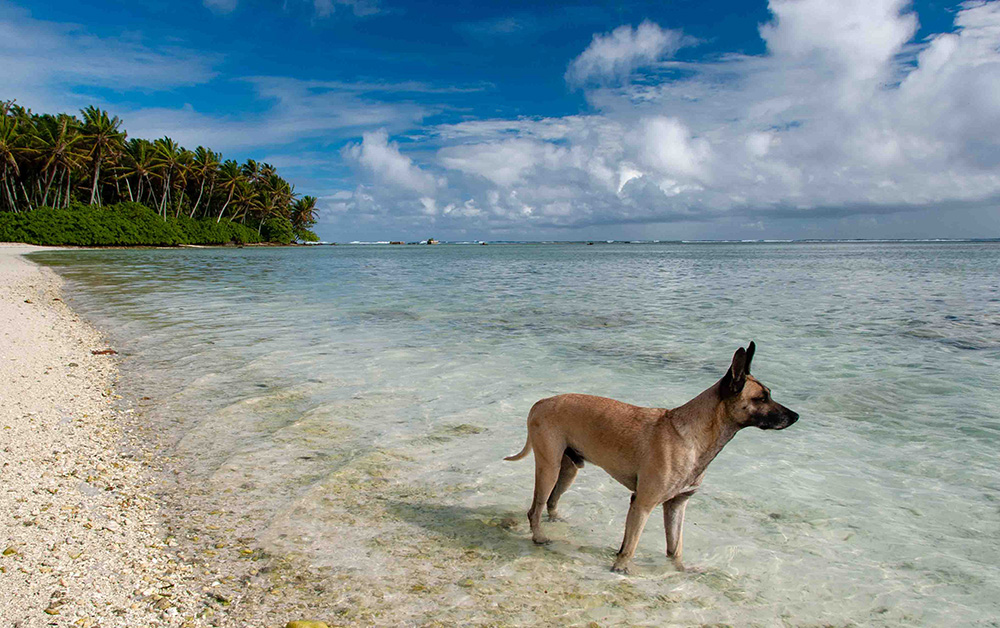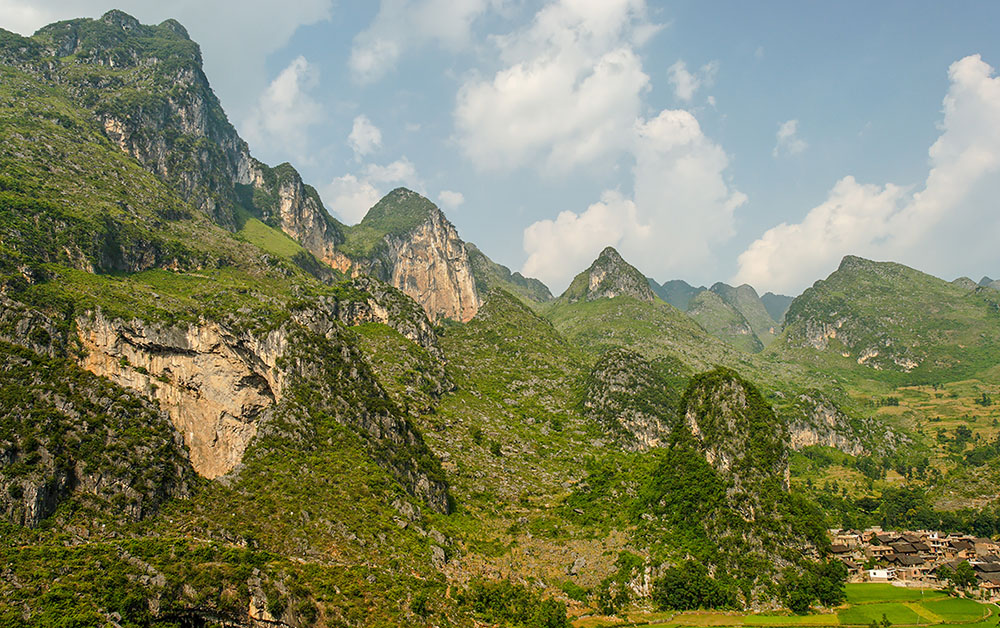Table of Contents
- Brian Kelley
- Research Fields
- Research Interests
- Student Opportunities
- Current Lab Members
- Past Lab Members
- Teaching
- Current and upcoming classes:
- GEOSC 097: Gold Rush: Geology and History Along the Oregon and California Trails
- GEOSC 210: Geoscience Data Analytics
- GEOSC 397: Earth Science Problem Solving
- GEOSC 440: Marine Geology
- GEOSC 470W: Introduction to Field Geology
- GEOSC 472: Field Camp
- GEOSC 502: Evolution of the Biosphere
- GEOSC 597: Oceanography Seminar
- Current and upcoming classes:
- Publications
Brian Kelley
Assistant Professor | Penn State Geosciences

Research Fields
Marine Science
Earth System Evolution
Paleoclimate, Paleobiology, and Paleoceanography
Stratigraphy and Sedimentology
Geochronology
Geochemistry
Research Interests
I study Earth system evolution across episodes of rapid and high-magnitude climate change. I am especially motivated to understand the effects of these episodes on marine environments and life as an analog for understanding the long-term consequences of modern climate warming. The setting for my work is commonly tropical marine environments—and coral reefs, in particular—because they are genetically linked to tectonic, climatic, biologic, and chemical ocean conditions. These connections make them exceptional archives of Earth system processes and key indicators of global environmental health. Work in my lab is motivated by interesting scientific questions rather than the tools we use to answer them, so we combine field, laboratory, and analytical approaches to projects involving a broad array of fields including sedimentology, oceanography, geochemistry, geochronology, paleobiology, and ecology.
Student Opportunities

I have opportunities for students in 2024-2025 academic year. Please read through my research interests and consider applying. Interested students can contact me at brian.kelley [at] psu.edu.
Current Lab Members
Kate Grosswiler, PhD student
Garrett Shepherd, PhD student
Evan Ritchey, MSc student
Olivia Adams, BSc student
Alexis Kennedy, BSc student
Sofia Sarracino, BSc student
Past Lab Members
Hunter Reeves, BSc student, now a PhD student at The University of Texas
Ethan Lionetti, BSc student, now a MSc student at Kent State University
Sunday Siomades, BSc student, now at the Kansas Geological Survey
Teaching
I believe that students learn best when they are challenged to grow and develop in a supportive and encouraging environment. I try to teach students in the field as much as possible, but Earth science is evolving. Advances in computational technology, data availability, and laboratory techniques have made programming and analytical skills increasingly important. My ultimate goal is to help my students develop and master a broad range of skills that will make them competitive in modern job markets.
Current and upcoming classes:
GEOSC 097: Gold Rush: Geology and History Along the Oregon and California Trails
The influence of geology on the gold rush, westward expansion, and immigration in the 19th century.
GEOSC 210: Geoscience Data Analytics
A gentle introduction to the organization, analysis, and presentation of geoscience data. In Excel and Python. No previous programming experience required.
GEOSC 397: Earth Science Problem Solving
A gentle introduction to quantitative problem solving and simple modeling for the mathematically anxious. Emphasis on solving real-world environmental and Earth science problems using simple mathematical approaches.
GEOSC 440: Marine Geology
History of ocean exploration, origin and evolution of the ocean, geology of the seafloor, and relevant aspects of oceanography.
GEOSC 470W: Introduction to Field Geology
Introduction to field observation and interpretation skills with an emphasis on stratigraphy and sedimentology. Weekly field trips with occasional classroom exercises during inclement weather. The theme of the course is investigating Paleozoic Earth system evolution through the sedimentary history of central Pennsylvania.
GEOSC 472: Field Camp
Capstone course focused on developing data collection, observation, and interpretation skills in the field.
GEOSC 502: Evolution of the Biosphere
Graduate course in biological and environmental evolution. Topics involve astronomy, biology, chemistry, paleobiology, and geology.
GEOSC 597: Oceanography Seminar
Weekly reading seminar on the past, present, and future of the oceans. Diverse and evolving topics. Includes discussion on all aspects of physical, chemical, and biological oceanography.
Publications
[22] Kelley, B.M., Lehrmann, D.J., Yu, M., Lau, K.V., Minzoni, M., Enos, P., Li, X., and Payne, J.L., Role of antecedent and dynamic topography in carbonate platform evolution: the Great Bank of Guizhou, south China, in revision.
[21] Kelley, B.M., Lehrmann, D.J., Yu, M., Lau, K.V., Minzoni, M., Enos, P., Li, X., and Payne, J.L., Influence of benthic ecosystem evolution on the occurrence of automicritic carbonate slopes: the Xiliang margin of the the Great Bank of Guizhou, south China, accepted, AAPG Bulletin.
[20] Kelley, B.M., Yu, M., Lehrmann, D.J., Altiner, D., and Payne, J.L. (2023) Prolonged and gradual recovery of metazoan-algal reefs following the end-Permian extinction, Geology, https://doi.org/10.1130/G51058.1.
[19] Li, X., Lehrmann, D.J., Luczaj, J., Kelley, B.M., Cantrell, D.L., Yu, M., Ferrill, N.L., and Payne, J.L., (2022), Unraveling overprinted formation mechanisms of massive dolostone in the Lower Triassic sequence of an isolated carbonate platform in Nanpanjiang Basin, south China: Sedimentary Geology, v. 440, p. 106240.
[18] Kelley, B.M., Lehrmann, D.J., Yu, M., Minzoni, M., Enos, P., Li, X., and Payne, J.L., (2021), Stratigraphic evolution of the Permian to Triassic Great Bank of Guizhou, in Wright, V.P. and Della Porta, G. eds., Field guides to exceptionally exposed carbonate outcrops, International Association of Sedimentologists, Field Guides 3, p. 179–207.
[17] Altiner, D., Payne, J.L., Özkan-Altiner, S., Lehrmann, D.J., Kelley, B.M., Summers, M.L., and Yu, M., (2021) Triassic foraminifera from the Great Bank of Guizhou, Nanpanjiang Basin, south China: taxonomic account, biostratigraphy, and implications for recovery from end-Permian extinction, Journal of Paleontology, p. 1–53.
[16] Li, X., Trower, E.J., Lehrmann, D.J.,Minzoni, M., Kelley, B.M., Schaal, E.K., Altiner, D., Yu, M., and Payne, J.L. (2021) Implications of giant ooids for the carbonate chemistry of Early Triassic seawater. Geology, v. 49.
[15] Kelley, B.M., Lehrmann, D.J., Yu, M., Jost, A.B., Lau, K.V., Meyer, K.M., Altiner, D., Minzoni, M., Schaal, E.K., and Payne, J.L. (2020) Controls on carbonate platform architecture and reef recovery across the Paleozoic to Mesozoic transition: A high-resolution analysis of the Great Bank of Guizhou. Sedimentology, v. 67, p. 3119-3151.
[14] Fullmer, S., Al Qassab, H., Buono, A., Gao, B., Kelley, B.M., and Moore, P.J., (2019), Carbonate pore-system influence on hydrocarbon displacement and potential recovery, In McNeill, D.F., Harris, P. (Mitch), Rankey, E.C., and Hsieh, J.C.C., eds., Carbonate Pore Systems: New Developments and Case Studies: v. 112. SEPM, Tulsa, Oklahoma, p. 268-284.
[13] Lau, K.V., Maher, K., Brown, S.T., Jost, A.B., Altiner, D., DePaolo, D.J., Eisenhauer, A., Kelley, B.M., Lehrmann, D.J., Paytan, A. and Yu, M. (2017) The influence of seawater carbonate chemistry, mineralogy, and diagenesis on calcium isotope variations in Lower-Middle Triassic carbonate rocks. Chemical Geology, v. 471, p. 13-37.
[12] Kelley, B.M., Lehrmann, D.J., Yu, M., Minzoni, M., Enos, P., Li, X., Lau, K.V., and Payne, J.L. (2017) The Late Permian to Late Triassic Great Bank of Guizhou: An isolated carbonate platform in the Nanpanjiang Basin of Guizhou Province, China. AAPG Bulletin, v. 101, p. 553-562.
[11] Lehrmann, D.J., Bentz, J.M., Wood, T., Goers, A., Dhillon, R., Akin, S., Li, X., Payne, J.L., Kelley, B.M., Meyer, K.M. and Schaal, E.K. (2016) Reply: Permian-Triassic microbialite and dissolution surface environmental controls on the genesis of marine microbialites and dissolution surface associated with the end-Permian mass extinction: new sections and observations from the Nanpanjiang Basin, South China. Palaios, v. 31, p. 118-121.
[10] Lau, K.V., Maher, K., Altiner, D., Kelley, B.M., Lehrmann, D.J., Silva-Tamayo, J.C., Weaver, K.L., Yu, M., & Payne, J.L. (2016) Marine anoxia and delayed Earth system recovery after the end-Permian extinction. Proceedings of the National Academy of Sciences of the United States of America, v. 113, p. 2360-2365.
[9] Lehrmann, D.J., Bentz, J.M., Wood, T., Goers, A., Dhillon, R., Akin, S., Li, X., Payne, J.L., Kelley, B.M., Meyer, K.M. and Schaal, E.K. (2015) Environmental controls on the genesis of marine microbialites and dissolution surface associated with the end-Permian mass extinction: new sections and observations from the Nanpanjiang Basin, South China. Palaios, v. 30, p. 529-552.
[8] Lehrmann, D.J., Chaikin, D.H., Enos, P., Minzoni, M., Payne, J.L., Yu, M., Goers, A., Wood, T., Richter, P., Kelley, B.M., Li, X., Qin, Y., Liu, L. and Lu, G. (2015) Patterns of basin fill in Triassic turbidites of the Nanpanjiang basin: implications for regional tectonics and impacts on carbonate platform evolution. Basin Research, v. 27, p. 587-612.
[7] Minzoni, M., Lehrmann, D.J., Payne, J.L., Enos, P., Yu, M., Wei, J., Kelley, B.M., Li, X., Schaal, E. and Meyer, K. (2014) Triassic tank: Platform margin and slope architecture in space and time, Nanpanjiang Basin, south China. In: Deposits, Architecture, and Controls of Carbonate Margin, Slope, and Basinal Settings: SEPM, Special Publication (Eds T. Playton, P. Harris and K. Verwer), v. 105, p. 84-113.
[6] Lehrmann, D.J., Minzoni, M., Li, X., Yu, M., Payne, J.L., Kelley, B.M., Schaal, E.K., and Enos, P. (2012) Lower Triassic oolites of the Nanpanjiang Basin, south China: controls on facies architecture, giant ooids, diagenesis and implications for hydrocarbon reservoirs: AAPG Bulletin, v. 96, p. 1389-1414.
[5] Li, X., Yu, M., Lehrmann, D.J., Payne, J.L., Kelley, B.M., and Minzoni, M. (2012) Factors controlling carbonate platform asymmetry: Preliminary results from the Great Bank of Guizhou, an isolated Permian–Triassic platform in the Nanpanjiang basin, south China: Palaeogeography, Palaeoclimatology, Palaeoecology, v. 315-316, p. 158-171.
[4] Li, X., Yu, M., Payne, J.L, and Kelley, B.M. (2011) Comparison on rock and chemical strata of Lower Triassic series, the Great Bank of Guizhou, south China: Guizhou Geology, v. 28, p. 161-166.
[3] Meyer, K.M., Yu, M., Jost, A.B., Kelley, B.M., and Payne, J.L. (2011) δ13C evidence that high primary productivity delayed recovery from end-Permian mass extinction: Earth and Planetary Science Letters, v. 302, p. 378-384.
[2] Feldmann, R.M., Schweitzer, C.E., Maxwell, P.A., and Kelley, B.M. (2008) Fossil isopod and decapod crustaceans from the Kowai Formation (Pliocene) near Makikihi, South Canterbury, New Zealand: New Zealand Journal of Geology & Geophysics, v. 51, p. 43-58.
[1] Crawford, R.S., Feldmann, R.M., Waugh, D.A., Kelley, B.M., and Allen, J.G. (2006) Decapod crustaceans from the Maastrichtian Fox Hills Formation: Bulletin of the Peabody Museum of Natural History, v. 47, p. 3-28.